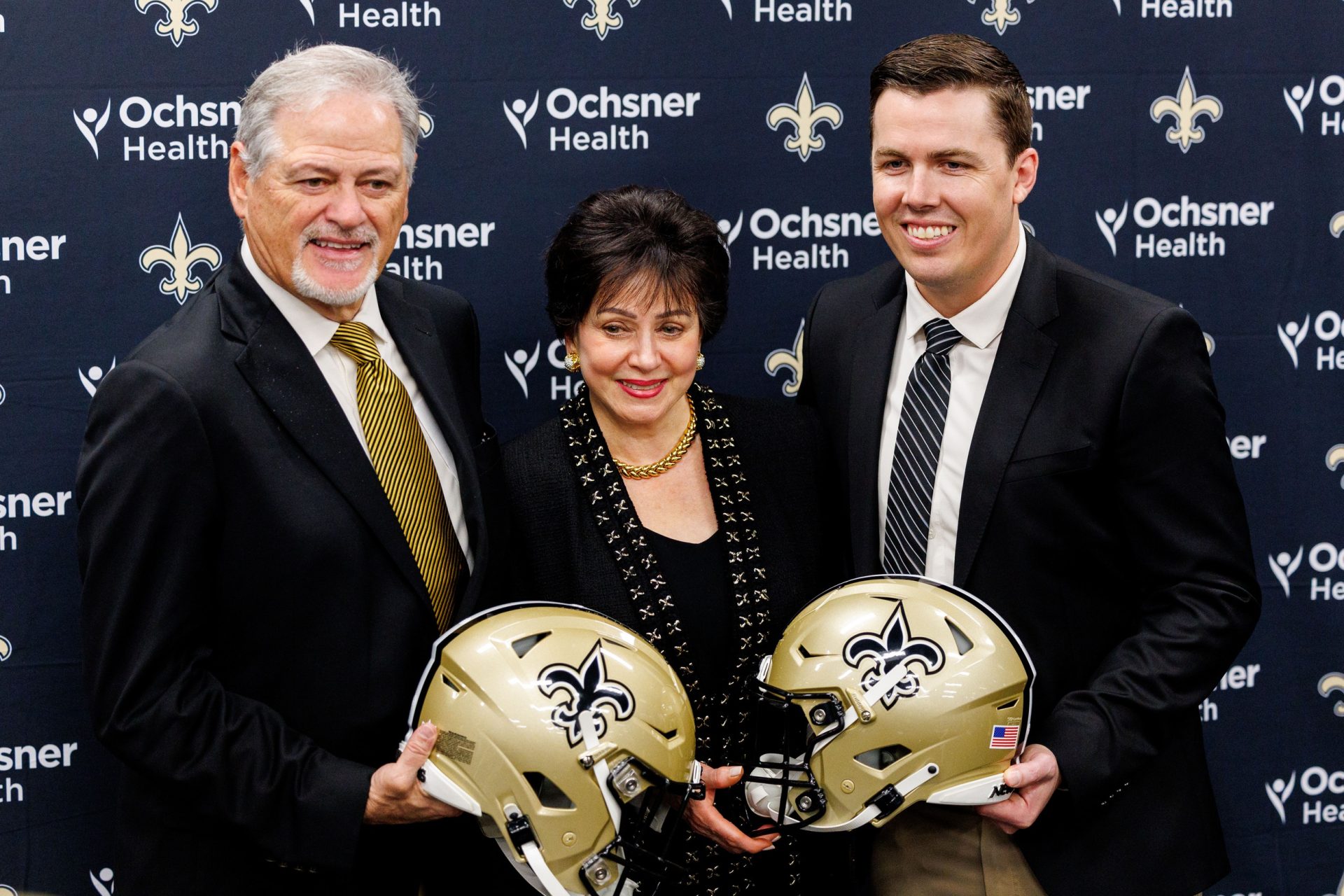The NFL, long seen as a boys club, is becoming a women’s club in the ownership ranks.
After the recent death of Colts owner Jim Irsay, who left the operation of the team to his daughters Kalen Jackson, Carlie Irsay-Gordon, and Casey Foyt—all hold the equal title of vice chair/owner—at least 12 of the total 32 NFL teams now count women as controlling or significantly active owners.
Those teams are the Colts, 49ers, Chiefs, Raiders, Browns, Bills, Buccaneers, Titans, Saints, Seahawks, Lions, and Broncos.
(Under NFL rules, there must be one controlling owner, which is the person who votes on things like rule changes, although the league does not disclose that list. Families that control teams must collectively own 30% of the club.)
That’s not to mention other teams with women who are deeply involved in organizations—like Charlotte Jones with the Cowboys and Katie Blackburn with the Bengals—or the increasingly diverse slate of NFL minority owners or limited partners (LPs), a list that has grown significantly since owners in 2022 issued a joint statement nodding to the “important goal of increasing diversity among ownership.”
Among the 30 new limited partners added across eight teams since 2024, 18—or 60%—are people of color, women, or both, NFL spokesman Brian McCarthy tells Front Office Sports.
Notable female minority owners include Mellody Hobson of Ariel Investments, who is part of the Broncos ownership group; Theresia Gouw of Acrew Capital, who is a minority owner in the Bills; and retired Olympic medal-winning American gymnast Dominique Dawes, who owns a piece of the Falcons.
“There are more women in ownership at every level than ever before,” McCarthy tells FOS.
How Things Started
The NFL launched in 1920 and didn’t have its first female owner until 1947, when Violet Bidwill took over the then–Chicago Cardinals following the death of her husband, Charles Bidwill. She quickly became the first female NFL owner with a championship under her belt when the Cardinals won the 1947 NFL Championship Game, defeating the Philadelphia Eagles 28–21 (the first “Super Bowl” wasn’t until 1967, and it was only referred to as the Super Bowl after the fact).
The next female owner didn’t arrive until 1983, when Virginia Halas McCaskey took over the Bears following the death of her father, George Halas. McCaskey owned the Bears until she passed away in February of this year at the age of 102.

 frontofficesports.com
frontofficesports.com
After the recent death of Colts owner Jim Irsay, who left the operation of the team to his daughters Kalen Jackson, Carlie Irsay-Gordon, and Casey Foyt—all hold the equal title of vice chair/owner—at least 12 of the total 32 NFL teams now count women as controlling or significantly active owners.
Those teams are the Colts, 49ers, Chiefs, Raiders, Browns, Bills, Buccaneers, Titans, Saints, Seahawks, Lions, and Broncos.
(Under NFL rules, there must be one controlling owner, which is the person who votes on things like rule changes, although the league does not disclose that list. Families that control teams must collectively own 30% of the club.)
That’s not to mention other teams with women who are deeply involved in organizations—like Charlotte Jones with the Cowboys and Katie Blackburn with the Bengals—or the increasingly diverse slate of NFL minority owners or limited partners (LPs), a list that has grown significantly since owners in 2022 issued a joint statement nodding to the “important goal of increasing diversity among ownership.”
Among the 30 new limited partners added across eight teams since 2024, 18—or 60%—are people of color, women, or both, NFL spokesman Brian McCarthy tells Front Office Sports.
Notable female minority owners include Mellody Hobson of Ariel Investments, who is part of the Broncos ownership group; Theresia Gouw of Acrew Capital, who is a minority owner in the Bills; and retired Olympic medal-winning American gymnast Dominique Dawes, who owns a piece of the Falcons.
“There are more women in ownership at every level than ever before,” McCarthy tells FOS.
How Things Started
The NFL launched in 1920 and didn’t have its first female owner until 1947, when Violet Bidwill took over the then–Chicago Cardinals following the death of her husband, Charles Bidwill. She quickly became the first female NFL owner with a championship under her belt when the Cardinals won the 1947 NFL Championship Game, defeating the Philadelphia Eagles 28–21 (the first “Super Bowl” wasn’t until 1967, and it was only referred to as the Super Bowl after the fact).
The next female owner didn’t arrive until 1983, when Virginia Halas McCaskey took over the Bears following the death of her father, George Halas. McCaskey owned the Bears until she passed away in February of this year at the age of 102.

NFL Now Has a Record Number of Women in Ownership
Today, at least 12 teams count women as controlling or significantly active owners, and the list of female minority owners is on the rise.
